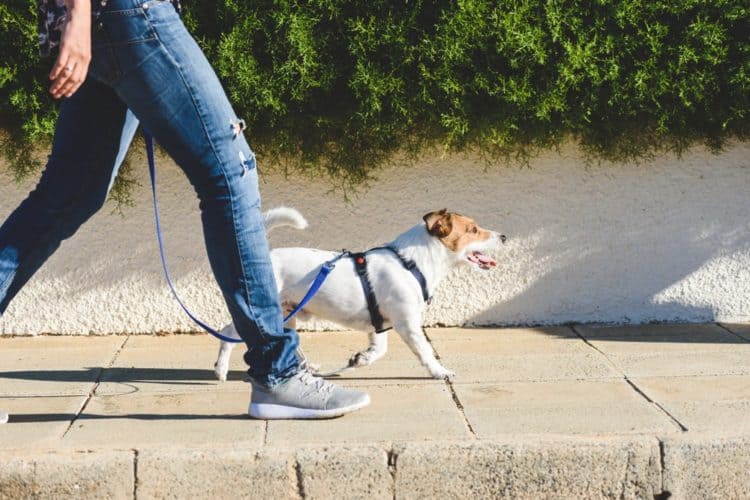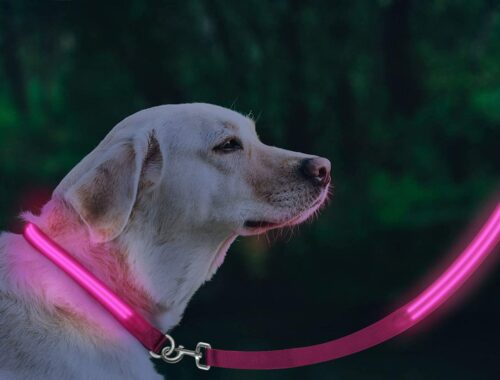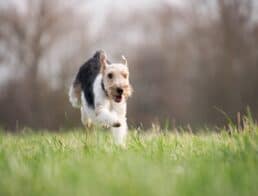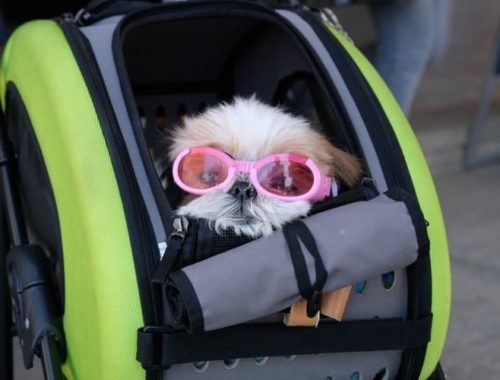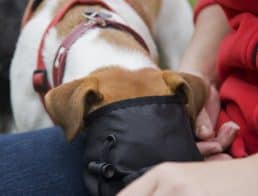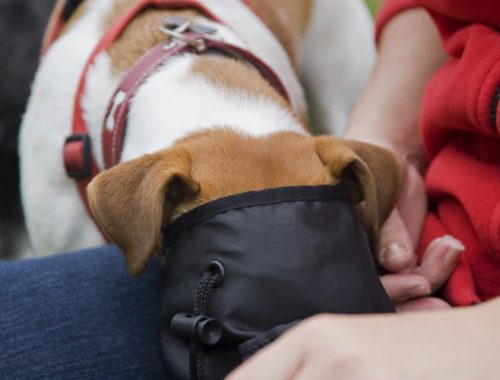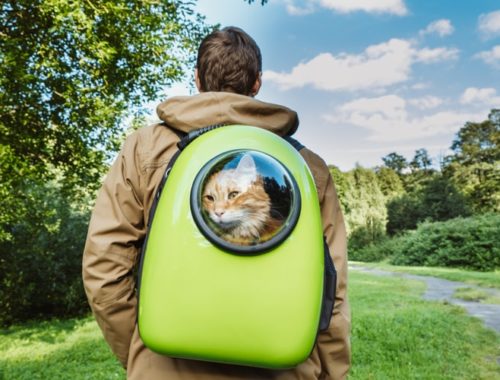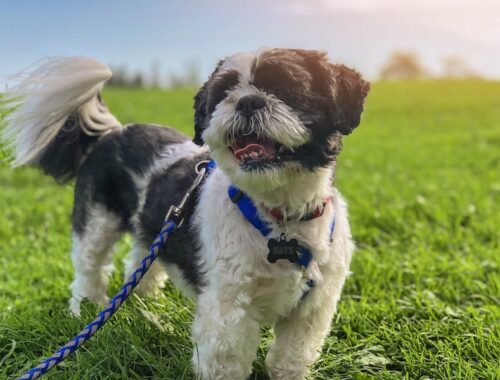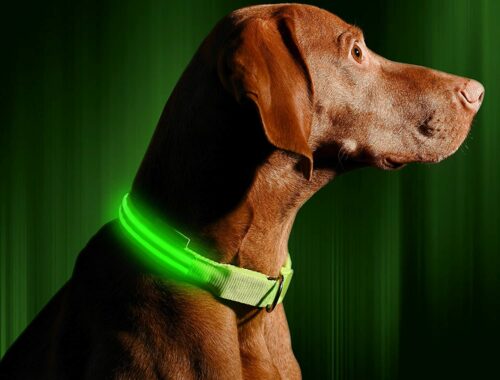One very common reason why some owners hesitate to take their canine outdoors for exercise or for a walk is because their dog just pulls while on a leash. The pulling and tugging quickly get frustrating and can lead to tripping or even injury to your dog and yourself. Plus, the constant pulling and tugging are not comfortable for your hands. So how can you rectify this problem?
Try loose leasing walking.
It is important to understand that there are many ways to teach your dog to walk on a loose leash. There is no best way. While offering treats and being patient are key, one can undertake many approaches. The key is to be gentle with your dog and correct them if they does not follow your commands.
Teaching a dog to walk properly while on a leash requires a little bit of patience and a bag full of treats. Dogs, by nature, are inquisitive and impulsive creatures. When outdoors, they like to sniff, check out other animals, humans or items and or leave their markings everywhere. These animals are quickly distracted and getting them to walk beside you can be difficult. However, if you are willing to put in some time and effort, you can walk your dog on a loose leash without too many hassles. Here’s what you need to know to get started.
1. What Technique Should You Use to Ensure Your Dog Behaves When Walking on a Loose Leash?
If you talk to five dog specialists, you will likely get ten answers—all different. Use common sense. The name of the game is to prevent your dog from pulling on the leash. So here are some tips that may help:
Gather the Right Items
Before you train your dog to walk on a loose leash you need the following items:
- A comfortable non-retractable leash between 4 and 6 feet
- A collar or a harness: The former is preferred as it offers better control of the animal, is gentler on the body, and your dog is less likely to pull. Look for a loose leash dog collar that is comfortable for your dog to wear and for your to hold.
- If you prefer to use a training aid, then the use of a front hook harness or a head halter is recommended.
- Plenty of treats
- Time and patience
- Practice, practice and more practice
Start Young
Younger dogs are keen to learn and the sooner you get them used to a neck collar, leash and the outdoors, the faster they will acquire good habits.
Start Training Inside the Home
If you have a small dog, puppies, reside in an apartment, or do not have access to an enclosed open area, then you should start the training at home. When at home, get up and call your dog. Then start walking a few steps. If your dog complies with your commands and walks alongside you, give them a treat. Do not use a leash inside the home.
Do this often at home and soon your dog will realize that if they walk alongside you, a treat will be coming. Sometimes, you may have to place them at your feet and walk a few steps forward and then call your dog.
Head Outdoors
Next, go outside the home in an open field where there is less distraction. Always make sure the leash is loose. It really does not matter what hand you hold the leash in but you must have plenty of treats. Command your dog and start walking.
As soon as they get distracted or start to pull, stop. Go back a few steps and call them. When they come to your side, offer them a treat and try walking forward again. Every time your dog walks by your side without pulling, praise them constantly. With time, they will quickly understand that if they walks with you, they will be rewarded with a treat. It’s a good idea to shop for Dog Coats with leash slits along the neck that allow free-flowing dog walks.
Set a Time Limit
When teaching your dog how to walk politely on a loose leash, do not make them endure training for hours on end. Perform the exercise for 5 to 15 minutes and give them a break. Do it 2 to 3 times a day and within a few days, your dog will understand what is required.
Make it Fun
Even though dogs love to please their masters, they also want to have fun. So mix the training with some running or catching the frisbee/ball. Bring your dog’s favorite toy along and let them chew on it.
Always be Calm and Never Shout or Scream at Your Dog
Understand that your dog will once in a while wander a few steps to mark their territory. Accept this as part of your dog’s behavior. Do not be absolutely controlling—as an owner you also have to accept certain behaviors and modify the way you walk.
Distractions
If there is a distraction while walking, call your dog or offer him a treat. In some cases, you may have to change the direction of your walk to keep away from the distraction. Dogs usually get very excited when they see other animals and are more likely to pull on the leash. Be sure to never hit them, but use words of praise when they obey instead.
2. How long does it take for a dog to walk politely on a loose leash?
To help your dog walk at leisure while on a leash may take a few days or a few weeks. If you are patient, kind and offer them treats, their behavior will appear sooner than you think. Dogs are smart creatures and they always want to please the master.
3. What Happens if Your Dog Will Not Walk Nicely on a Loose Leash?
There are some dogs who are stubborn and will resist all types of commands. In such scenarios, you may need assistance from a professional for a day or two. Professionals are not very expensive and in most cases, will teach good behavior to your dog in a matter of hours.
It’s also important to socialize your dog. One thing which many owners fail to understand is that walking politely on a loose leash also requires your dog to be socialized. Thus, start socializing them at an early age. The more your dog gets used to the sight and sounds of other animals and humans, the calmer he or she will be and less likely to pull on the leash.
At home, allow them out of the crate to greet people, take them in your car and encourage them to greet others. If you always crate your dog and never allow them out of the house except at night, they are going to be frustrated and very anxious when they go out and are unlikely to obey you.
Just like a human, dogs love company. So you have to allow your dog to socialize. The more friendly they are, the more likely it will walk politely on a loose leash.
Featured Image Credit: alexei_tm, Shutterstock


